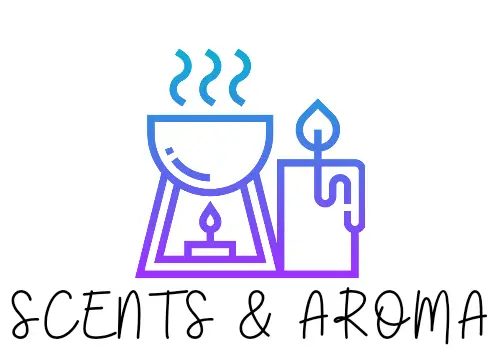Move over scented candles, the popularity of wax melts has increased steadily over recent years. According to research, the wax melt global market was worth an estimated $2 billion in 2015 and is expected to reach $6.13 billion within four years.
It is no surprise that wax melts have increased in popularity; the lack of exposed flames and harmful emissions means they’re much safer. Growing awareness of health and environmental hazards seems to be a driving force in the increased demand for wax melts.

However, there are some people who might ask, ‘do wax melts cause headaches’? The truth is that wax melts can cause some people to get headaches. If you find that strong fragrant perfumes and aftershaves give you headaches the chances are that wax melts will do as well as they rely on strong fragrance oils to spread the scents and aroma around your home.
Carry on reading for a more indepth look as to the reasons why and if it likely that you will suffer a headache from wax melts.
What are wax melts, and where did they originate?
First things first, wax melts are solid pieces of wax without a wick. They are placed into a warmer that heats up and melts the wax. When the wax is melted, it releases a scent.
Believe it or not, wax melts were originally a waste product from candle making. Candlemakers looked for a way of using leftover wax, and wax melts came about.
If you would like to know more about what wax melts are and how to use them check out my awesome guide.
Can scents cause headaches?
Pleasant smells have many beneficial effects on our health. Aromatherapy is based entirely on scents to improve our well-being. But, can scents cause headaches?
It is believed that as many as one in three people are susceptible to headaches when there are strong scents around. Scientists think that strong odours might cause the blood vessels to dilate and swell, stimulating the area of the brain that is associated with headaches.
In some cases, it might be that a person has an allergy to a certain scent-causing chemical, or they might be sensitive to certain odours and have allergy symptoms like a runny nose, watering eyes, and a headache.
It’s believed that sensitivities to fragrances are becoming more commonplace due to the huge variety of scented products on the shelves today.
We have laundry detergents, soaps, air fresheners, and scented candles that all trigger the senses. It’s even possible for unscented products to trigger headaches due to chemicals in the products.
If you love scented wax melts but find yourself in the unfortunate few that suffer headaches with strong scents, there are things you can do to alleviate the problem.
Can soy wax or beeswax cause headaches?
The dangers of paraffin wax are well documented, and wax melts made with paraffin are much more likely to cause headaches or migraines. But what about soy or beeswax?
Both soy wax and beeswax are natural waxes that don’t produce harmful chemicals when they burn. So if you think your headaches are a result of burning wax melts, choose some melts that are made of beeswax or soy wax to see if the natural waxes have the same effect.
Beeswax is the only wax that smells great as it is without any scent or fragrance added. So, if you’re susceptible to headaches from strong scents, a 100% pure beeswax wax melt is a great option.
For more information about the differences between soy wax, beeswax and paraffin wax check out this article that I wrote
Can fragrance oils in wax melts cause headaches?
Fragrance oils are arguably the most likely cause of headaches associated with wax melts. Since many fragrance oils aren’t naturally-derived products, they release chemicals as they burn, which can cause headaches. For some people, choosing naturally-fragranced wax melts can alleviate headaches.
Fragrance oils are often used in wax melts because they aren’t volatile and will last longer, generally speaking, than essential oils.
However, it’s worth being aware that two types of fragrance oil exist: synthetic and natural. Synthetic oils are created in a lab and use compounds that don’t exist naturally. Therefore, you should always try to avoid synthetic fragrance oils.
Natural fragrance oils are still lab-created, but they are created with natural components. So, while they’re not truly natural, they contain nothing artificial.
Fragrance oils are much cheaper than essential oils. This is because it takes a lot of plant material to produce them. Rose essential oil, for example, requires about 1000 petals for just a single drop of oil.
Can essential oils in wax melts cause headaches?
Essential oils have been used for over 1000 years, even before many modern medicines. Many people put oil-infused lotions on their skin or diffuse them into the air. The idea is that they bind to the smell receptors and stimulate the central nervous system.
Research on essential oils is scarce, but one study found that inhaling a mixture of cardamom, peppermint, spearmint, and ginger meant less nausea after surgery. Another study showed how lavender oil could lower cortisol, the stress hormone.
Essential oils are strong fragrances, and if a person has a particular sensitivity, they can experience headaches from essential oils in wax melts.
While some people immediately get headaches from essential oils in wax melts, others only develop them after repeat exposure to small amounts.
All is not lost, however. The beauty of wax melts is that you control what you melt. This means that you can mix 100% natural beeswax or unscented soy wax with another wax to dilute the scent in order to eliminate problem headaches.
If headaches continue to be a problem, burning 100% pure beeswax creates a pleasant aroma without any strong scents.
I have a very in-depth article about the difference between fragrance oils and essential oils in candles and wax melts. It tells you which is the best for your health and home, check it out.
Tips for using wax melts safely
The safest wax melt burner to use is an electric wax melt burner, as this does not have a naked flame.
This does not mean that there aren’t safety precautions to take, however. Just like a naked flame, you should never leave an electric wax melt burner unattended when it is in use. Also, you must make sure it is kept away from pets and children.
For non-electric wax melt burners, it’s important to follow the individual instructions of the burner carefully. Only use a tea light candle that is of good quality. You shouldn’t use large tea lights or any other type of candle.
There should be at least 4 inches of space above the flame to ensure adequate ventilation. If the flame gets enlarged or touches the top of the burner, you should extinguish it straight away using a candle snuffer.
Never place the wax melt burner on anything flammable. You should ensure there is nothing nearby that could catch fire.
Final thoughts – do wax melts cause headaches?
Wax melts are really growing in popularity, but it is believed that around one in three people suffers from scent-induced headaches.
While the problem won’t be solely with wax melts, if you like wax melts, there’s a couple of things you can do to see if you can ease the problem.
Firstly, ensure that your candles don’t contain any artificial fragrances that could be contributing to the problem. Also, you should be aware that when paraffin wax burns, it releases harmful chemicals that can cause headaches.
Secondly, you can experiment with mixing 100% natural beeswax with some scented wax to reduce the strength of the aroma. If this doesn’t work, you could use beeswax alone. This still smells wonderful and homely but won’t cause headaches.
- Can You Put Perfume In A Humidifier? (Read First) - September 17, 2022
- Can You Put Essential Oil In A Steam Mop? (Safety Advice) - September 17, 2022
- How To Make Lavender Oil At Home ( Candles And Diffusers) - September 9, 2022

